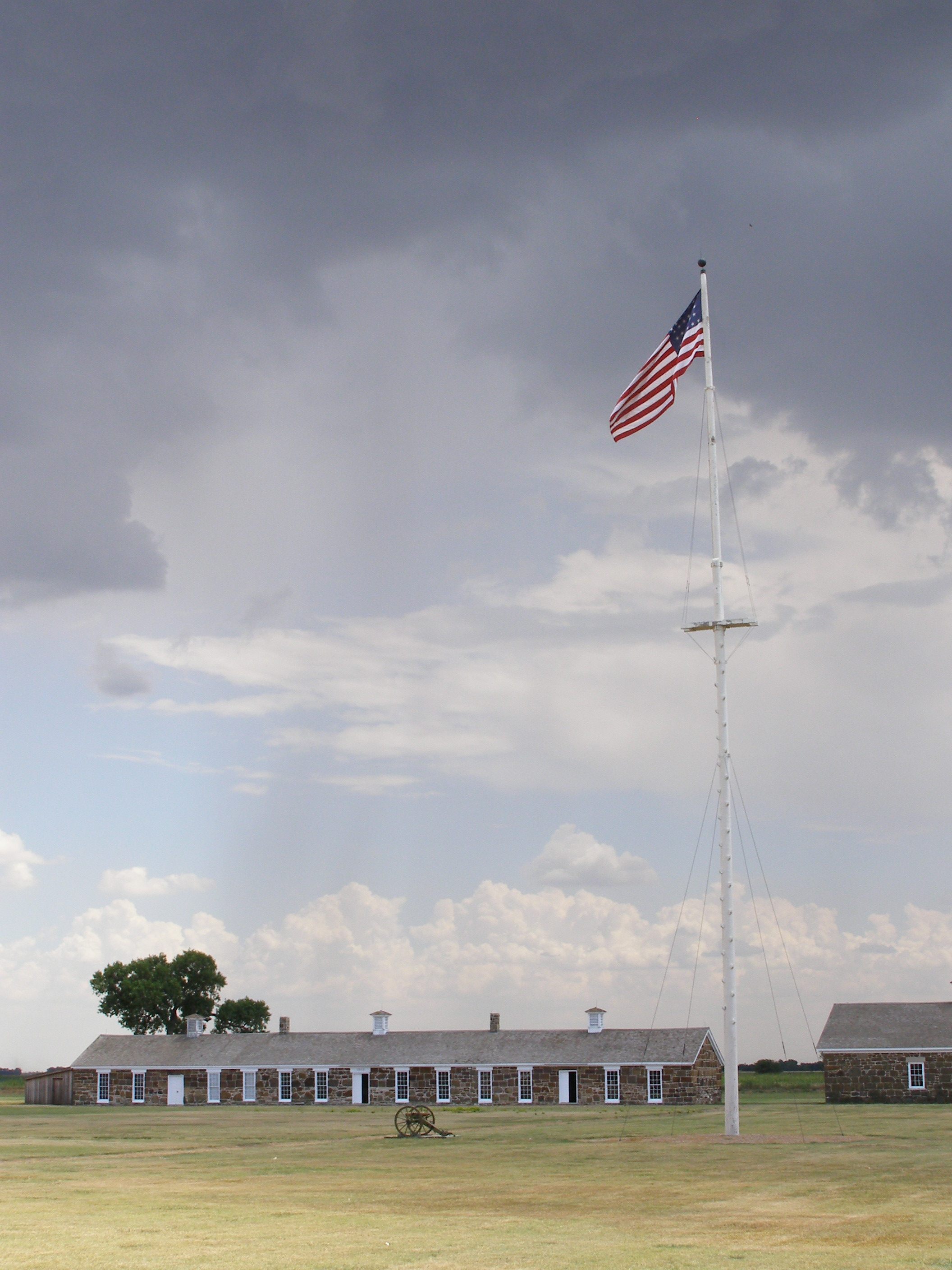A Journey Through Time: Fort Larned National Historic Site
Planning a visit? Check out the Fort Larned National Historic Site page for visitor info, directions, and what to do when you get there.

Introduction
Nestled in the sweeping landscapes of Wichita, Kansas, Fort Larned National Historic Site is an unsung gem that promises both intriguing historical excavations and scenic natural splendors. Once serving as one of the most significant military outposts on the western frontier during its operation from 1859 until 1878, this now tranquil site presents a captivating window into our nation’s past. This blog post invites you to embark upon an invigorating journey through time, appreciating history while basking in nature’s bounty.
Historical/Cultural/Geological Background
Named after Colonel Benjamin F. Larned, who was then Paymaster General of the U.S. Army, Fort Larned has witnessed seismic paradigm shifts. Serving initially as a guardian post to protect traffic along the Santa Fe Trail from Native American raids during turbulent times such as “Bleeding Kansas” conflicts and Civil War tensions. The fort evolved in response to peace treaties with Central Plains tribes and became instrumental in implementing U.S.’s ‘Indian Policy.’
The nine original stone buildings stand today as humbling echoes of yesteryears – housing exhibits on military life and Indian Agencies’ workings, transporting visitors back to wild west frontier days.
From a geological perspective, Wichita’s uniquely rolling terrain cradles this historic site showcasing its beautiful native prairies which are home to diverse flora and fauna making it ideal for wildlife enthusiasts and history buffs alike.
Activities Guide
Beyond its rich historical tapestry, Fort Larned beckons with a variety of activities that cater to different interests. Walk the self-guided tour winding through barracks, officers’ quarters, shops, and stables while absorbing the compelling narratives of soldiers, settlers, and tribal communities.
For nature lovers, bird-watching is a must. With over 100 species frequenting the Pawnee River area - spots like Turkey Roost offer sublime views.
Those seeking adventure can traipse along the public nature trails extending across the prairie or embark on an enthralling night sky program during summer months.
Visitor Information
While Fort Larned National Historic Site remains open all year round (except Thanksgiving, Christmas and New Year’s Day), it’s advisable to check current conditions before planning your trip as weather can impact accessibility.
The Visitor Center operates from 8:30 am until 4:30 pm where you can gather information for your visit, browse extensive exhibits or shop at their bookstore which offers literature related to Fort Larned’s rich history.
There are no entry fees making this historic site open to everyone who seeks an enriching experience.
Tips for Different Visitors
For families with children, make sure to participate in Junior Ranger Program – it’s both educational and entertaining for little explorers. For Park enthusiasts interested in volunteer programs or pursuing/increasing their knowledge about American history – there are opportunities available with ongoing research and archaeological projects. For physically challenged visitors, facilities such as wheelchair-accessible restrooms and tracks are available although some areas might be challenging due to natural terrain.
Regional Context
Situated conveniently off Highway 156 near Larned in Kansas - Fort Larned serves as an ideal spot for those road-tripping across America’s heartland. Just two hours away you can explore Dodge City known for Boot Hill Museum and Wild West lore, or head to the grandeur of Quivira National Wildlife Refuge.
Conclusion
Fort Larned National Historic Site is an immersive journey back in time, a union of rich culture, intriguing history, and sublime natural beauty. It’s a must-visit destination for any passionate explorer who seeks experiences beyond ordinary tourist trails.
FAQs
-
What’s the ideal time of year to visit the Fort Larned National Historic Site?
While it’s open all year round, spring (April to June) typically offers pleasant weather for outdoor activities. -
Can we bring our pets along?
Yes, pets are allowed but must remain leashed at all times and are restricted from entering buildings due to preservation concerns. -
Is camping available on site?
No. While there is no camping within the park premises itself, nearby options are available such as Fort Larned Lions Club Park & Campground. -
Are guided tours available?
Yes. Free guided tours led by knowledgeable rangers are generally available during summer months. Check their website or call ahead for schedules. -
Do I need a reservation to visit Fort Larned National Historic Site?
No reservations are needed for individuals/families visiting the site. However, large groups like school trips are requested to make advanced bookings.
Tags
#FortLarned #NationalHistoricSite #KansasTravel #AmericanHistory #CulturalHeritage #NatureTrails #MilitaryHistory #FamilyAdventure
Frequently Asked Questions
What are the operating hours and admission fees for Fort Larned National Historic Site?
Fort Larned National Historic Site is typically open year-round, though specific hours may vary by season. Most national parks charge an entrance fee, but some sites are free to visit. Check the official NPS website for current hours and fee information.
How long should I plan for a visit to Fort Larned National Historic Site?
A typical visit to Fort Larned National Historic Site can range from a few hours to a full day, depending on your interests and the activities you choose. Allow extra time for hiking, photography, and exploring visitor centers.
What should I bring when visiting Fort Larned National Historic Site?
Essential items include comfortable walking shoes, water, snacks, sunscreen, and weather-appropriate clothing. Bring a camera to capture the scenic views and consider binoculars for wildlife viewing.
What is the best time to visit Fort Larned National Historic Site?
The best time to visit depends on your preferences and the activities you plan to enjoy. Spring and fall often offer pleasant weather and fewer crowds, while summer provides the longest daylight hours.
Is Fort Larned National Historic Site accessible for visitors with mobility needs?
Many areas of Fort Larned National Historic Site are accessible to visitors with mobility needs, including paved trails and accessible facilities. Contact the park directly for specific accessibility information and current conditions.

